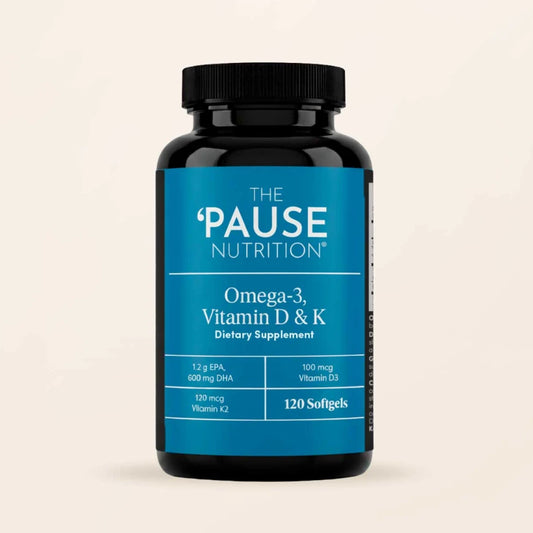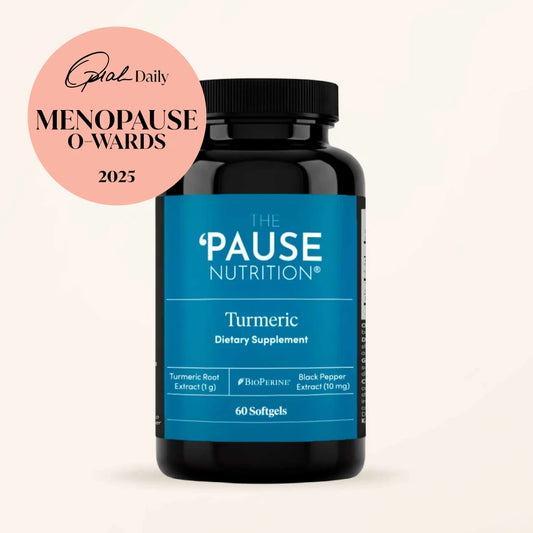Your GLP-1 “GPS Roadmap”: How to Maximize Results With GLP-1 Medications

Share
I’m Dr. Rocío Salas-Whalen, triple board-certified in Endocrinology, Obesity Medicine, and Internal Medicine, and a friend of Dr. Mary Claire Haver. I’m the founder of a thriving endocrinology practice in New York City and my mission is simple: to help people understand how their bodies work, especially when hormones, metabolism, and weight seem to defy logic.
I’ve spent more than fifteen years guiding patients through the science and real-life application of GLP-1 medications and am excited to share some of that guidance with you in this article and in my conversation with Dr. Haver on unPAUSED.
After years of prescribing GLP-1s, I’ve seen first-hand what truly drives success. I’ve distilled that experience into my upcoming book, Weightless: A Doctor’s Guide to GLP-1 Medications (Penguin Random House, Dec 30 2025), which just received a ★ Starred Review from Publishers Weekly, a distinction reserved for exceptional titles.
But you don’t have to wait for the book! If you’re currently using a GLP-1 medication or thinking about it, this guide is for you. I’m sharing this GPS Roadmap that you’ll need to follow to reach your weight loss, health and vitality destination!
Your GPS Roadmap: GLP-1 + Protein + Strength Training
Achieving sustainable, healthy weight loss with GLP-1 medications isn’t about the medication alone, it’s about how you support your body while using it. Think of your results as being guided by a GPS: G for GLP-1, P for Protein, and S for Strength Training.
Together, these three elements create a roadmap for lasting metabolic health. GLP-1’s help align your biology with your goals, protein fuels and protects your lean tissue, and strength training keeps your metabolism strong and resilient. When all three work in harmony, you’re not just losing weight, you’re building a stronger, healthier foundation for life.
Let’s look at each element in more detail.
G = GLP-1
GLP-1 receptor agonists (Ozempic®, Wegovy®, Mounjaro®, Zepbound®) are synthetic, long-acting versions of our natural GLP-1 hormone, which the gut releases in response to food.
In a healthy system, GLP-1 helps slow gastric emptying, control appetite, and improve insulin release. The problem? The body’s own GLP-1 only lasts a few minutes before an enzyme called DPP-4 breaks it down. These medications extend its effects, allowing you to experience the full metabolic benefits for days at a time. This extended effect allows you to feel fuller sooner, eat less overall, and reduce food noise and cravings.
For many, GLP-1s represent more than weight management, they’re a reset button for metabolic health, improving blood sugar, cholesterol, blood pressure, and inflammation. When used properly, they don’t replace willpower, they align biology with behavior, helping your body work with you, not against you.
P = Protein
Protein is the most essential (and often the most overlooked) macronutrient when using GLP-1s. It’s the foundation for every system in your body.
Consuming adequate protein
- Builds and preserves lean muscle mass
- Strengthens bones and connective tissue
- Produces collagen and elastin for skin, hair, and joints
- Supports hormone production and immune function
Because GLP-1s reduce appetite and slow digestion, people often eat less overall, including less protein. Over time, that can lead to muscle loss, thinning hair, sagging skin, and a slower metabolism.
To protect your lean tissue, aim for about 100 grams of protein per day, divided into four servings of 25–30 grams each. Prioritize high-quality sources like Greek yogurt, fish, lean cuts of beef and pork, poultry, tofu, or protein powders when needed.
Think of protein as your anchor. It stabilizes blood sugar, reduces cravings, and keeps your metabolism active even as you lose fat.
S = Strength Training
Muscle is not just for aesthetics, it’s a metabolic organ that determines how efficiently your body burns calories, regulates glucose, and protects your long-term health. In fact, skeletal muscle acts as an endocrine organ, releasing powerful compounds called myokines that reduce inflammation and improve insulin sensitivity.
When you lose weight, your body can shed both fat and muscle. Without intentional resistance training, weight loss can come from loss of lean tissue and not loss of fat. Strength training is non-negotiable when using GLP-1s.
Start where you are. Bodyweight exercises like squats, lunges, and push-ups are enough to begin building muscle. Over time, add progressive resistance, using bands, dumbbells, or machines, to challenge your muscles and stimulate growth. Progressive resistance (lifting heavier over time) stimulates muscle growth, while adequate protein “feeds” that growth.
If you’re new to weights, investing in a qualified trainer can help ensure safety, correct form, and a sustainable program. Remember, it is never too late to start building strength! The benefits extend far beyond the gym. Strong muscles support joint health, mobility, balance, and confidence.
The Three Key Body-Composition Metrics
Your true goal on GLP-1 therapy isn’t just to lose weight, it’s to achieve body recomposition.
⬇ Lower visceral and body fat
⬆ Maintain or build skeletal muscle
That combination improves metabolism, strength, energy, and longevity. It’s what transforms short-term results into sustainable, lifelong health.
-
Skeletal Muscle Mass– This is the muscle you can actively build and maintain through training. It’s the single best predictor of healthy aging and longevity. It’s also an endocrine organ that secretesmyokines, hormones that fight inflammation and improve insulin sensitivity. Every pound of muscle burns more calories at rest and improves glucose metabolism. The more you have, the more resilient your body becomes against chronic disease.
-
Percentage Body Fat (PBF) - Instead of fixating on the number on the scale, focus on improving your body fat percentage while maintaining or increasing muscle. This is where you’ll notice true transformation. Your clothes fit better, your energy rises, and your metabolism stays strong.
Healthy ranges:
Women: 18–28%
Men: 10–20%
-
Visceral Fat - This is the deep, hidden fat that surrounds your organs. It’s not visible from the outside, but it’s the most harmful. Visceral fat triggers inflammation, insulin resistance, and hormonal imbalances.
GLP-1s can significantly reduce visceral fat, but combining them with strength training and adequate protein accelerates that process and helps prevent regain when medication is tapered to maintenance or discontinued.
Inside Weightless
In my upcoming book, you’ll find a deeper dive into everything we’ve covered here and much, much more! Here’s what to expect!
Part I: Understanding the science of weight gain, the history and evolution of GLP-1 medications, and how to select the right clinician and dosing strategy.
Part II: How to thrive while on GLP-1 medication including managing side effects, optimizing nutrition, and implementing the GPS Roadmap for long-term results.
Part III: What happens after weight loss. There are emotional, physical, social and cultural changes that no one prepares you for. I will walk you through step by step how to navigate life during your weight loss journey and maybe more importantly, life after you’ve achieved your weight loss goal.
Your GPS Roadmap Recap: GLP-1 + Protein + Strength Training
Your navigation system to a healthier, stronger, and more confident you.
G = GLP-1: Understand how these hormones work and why they’re transformative.
P = Protein: Learn the protein targets that preserve lean muscle and prevent plateaus.
S = Strength Training: Discover how building muscle supports metabolic health and longevity.
Goal: Body recomposition: less fat, more strength, better metabolism.
For a deeper dive into the power of GLP-1 medications and how you can thrive through your weight loss journey and beyond, tune into unPAUSED and pre-order Weightless at the link below.
https://weightlessthebook.com/
For more science-backed and compassionate insight related to your health please follow me on Instagram @drsalaswhalen. To learn how my team and I can help you feel your best, visit my medical practice website https://www.nyendocrinology.com/.
Thank you to the wonderful Dr. Mary Claire Haver for the privilege of sharing this message with her community.



















